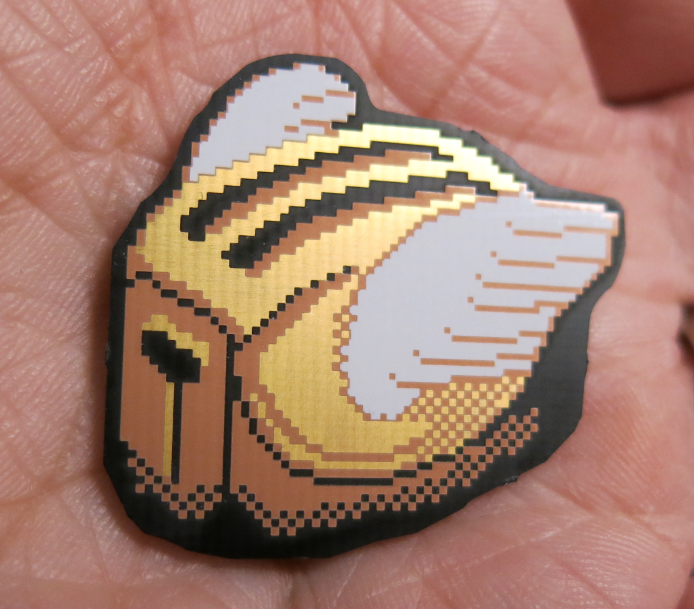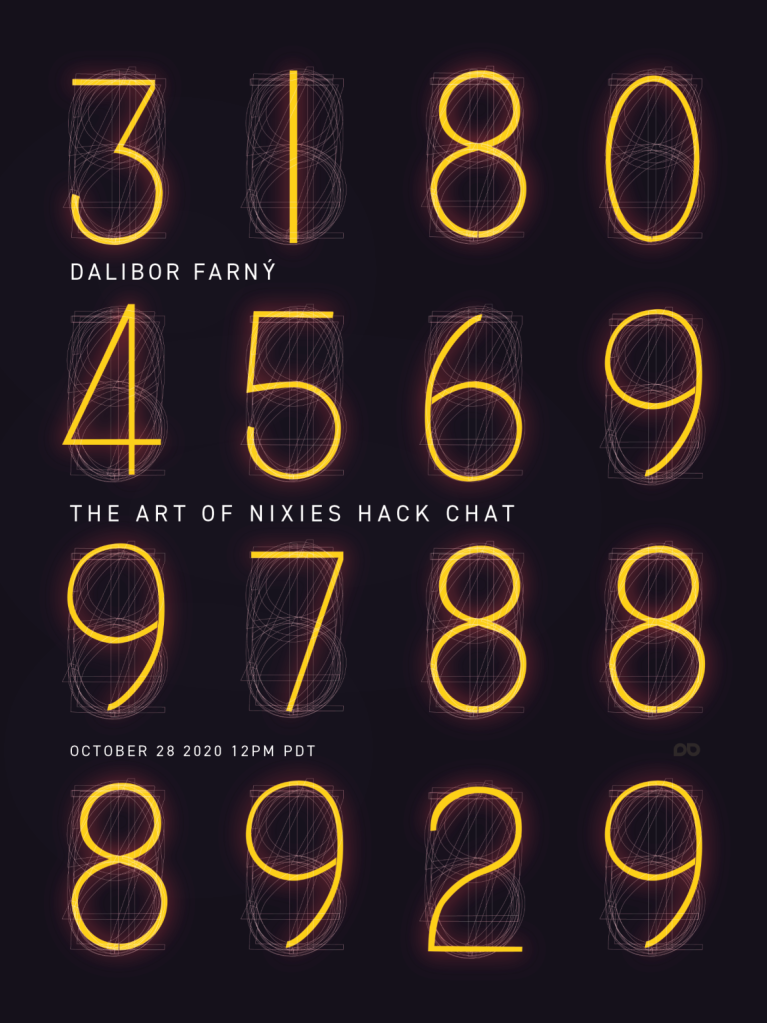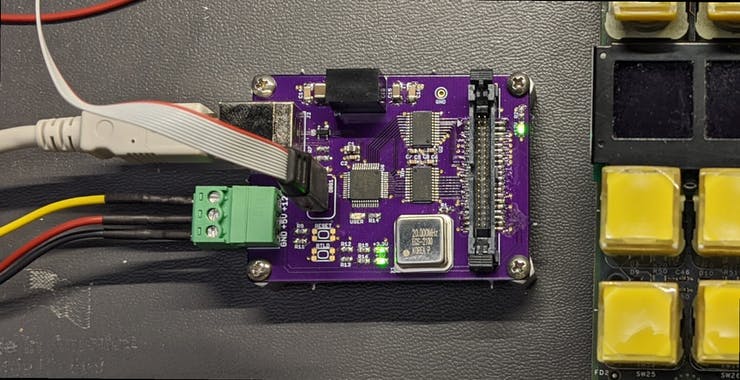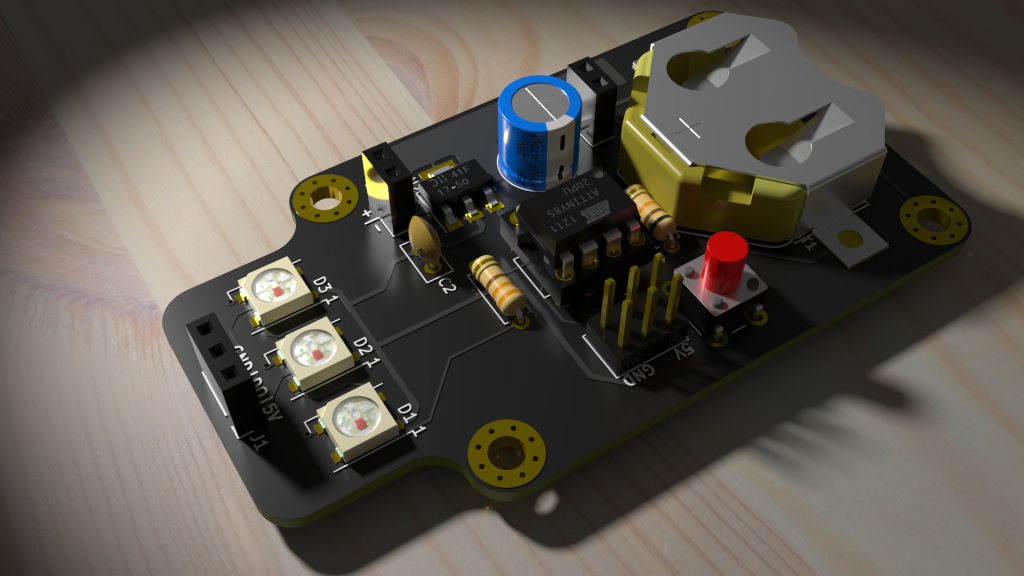
We love this nod to the After Dark screensaver, back when displays came with degauss buttons. Naturally, Electric Crowbar used our “After Dark” service (clear solder mask on black substrate).
The board is available for order as a shared project:


We love this nod to the After Dark screensaver, back when displays came with degauss buttons. Naturally, Electric Crowbar used our “After Dark” service (clear solder mask on black substrate).
The board is available for order as a shared project:

Jenny List writes on Hackaday:

Anyone who’s ever put together a bill-of-materials for an electronic device will be familiar with the process of s USBcouring supplier catalogs and data sheets for the best choice of components. The trick is to score the best combination of price and performance for the final product, and for those unused to the process, there are always seemingly identical products with an astonishingly wide variety of prices. It’s a topic [Timon] explores in a Twitter thread, examining a 20-cent in quantity of 100 USB-C socket alongside one that costs only 5 cents, and his teardown provides a fascinating insight into their manufacture.
The parts look so nearly identical that while it’s possible to differentiate between them visually, it’s near impossible to work out which was the cheaper. Some tiny features such as a crack in a metal fold or a bit less plating on the contacts emerge, but even then it’s no guide to the quality as they don’t appear on the same part. It’s only when the metal shell is removed to expose the underlying plastic moulding that more clues emerge, as one moulding is more complex than the other. The more complex moulding provides a better and more reliable fit at the expense of a much more costly moulding process, so at last we can not only identify the more expensive part but also see where the extra cash has gone. It’s a subtle thing, but one that could make a huge difference to the performance of the final assembly and which makes for a fascinating expose for electronic design engineers.
Mike Szczys writes on Hackaday:

Alfred Jones and Kipp Bradford to Deliver Keynotes at Hackaday Remoticon
There’s just one week left until Hackaday Remoticon, our online gathering in place of our traditional in-person conference during this time of social distancing. Joining the more than 20 hands-on workshops that make up the bulk of Remoticon, we’re excited to announce the two keynote speakers who will be taking the virtual stage: Alfred Jones and Kipp Bradford.
Tickets to see these keynote talks, to watch the SMD Challenge, to see hardware demos, and to take part in the show and tell are free, so get yours today!
Tom Fleets writes on Hackster about the latest prject form Open Book creator Joey Castillo:

The Newest Oddly Specific Object — the Sensor Ring — Shows Off the Latest Work From Joey Castillo!
Joey Castillo is one of those makers that not only seems to have a myriad projects continuously on the go, but also seems to actually make significant progress on them, rather than getting overwhelmed from juggling them in the air — something I’ve been known to end up doing…
With a striking resume of work that includes the Open Book, the Hiking Log, and even the more somber Big Board of Death, he’s no stranger to the pages at Hackster.io!
Keeping in following with Castillo’s focus on projects that monitor health metrics, his latest work tracks that theme perfectly, but also scales down the size of the hardware to something intended to fit within the form factor of a ring!

Coming up on Wednesday:
Join us on Wednesday, October 28th at noon Pacific for The Art of Nixies Hack Chat with Dalibor Farný!
When they were invented in the 1950s, Nixie tubes were a huge leap forward in display technology. In the days before affordable LEDs made seven-segment displays a commodity, there were few alternatives to the charming glow of the clear and legible characters inside Nixies. Sturdy and reliable, the cold-cathode displays found their way into everything from scientific instruments to test equipment, and even some of the earliest computers and the equipment that formed the foundation of the Space Race sported the venerable tubes.

But time marches on, and a display that requires high voltage and special driver circuits isn’t long for a world where LEDs are cheap and easy to design with. Nixies fell from favor through the late 1960s and 1970s, to the point where new tubes were only being made by the Russians, until that supply dried up as well. Rediscovered by hobbyists for use in quirky clocks and other displays, any stock left over from the Nixie’s heyday are quickly being snapped up, putting the tubes on the fast track to unobtainium status.
That’s not to say that you can’t get brand new Nixie tubes, of course. Artisanal manufacturers like Dalibor Farný have taken the Nixie to a whole new level, with big, beautiful tubes that are handcrafted from the best materials. Reviving the somewhat lost art of Nixie manufacturing wasn’t easy, but the tubes that Dalibor makes in a castle in the Czech Republic now find their way into cool clocks and other builds around the world. He’ll join us on the Hack Chat to dive into the art and science of Nixies, and what’s going on with his mysterious “Project H”.
Our Hack Chats are live community events in the Hackaday.io Hack Chat group messaging. This week we’ll be sitting down on Wednesday, October 28 at 12:00 PM Pacific time. If time zones baffle you as much as us, we have a handy time zone converter.
Click that speech bubble to the right, and you’ll be taken directly to the Hack Chat group on Hackaday.io. You don’t have to wait until Wednesday; join whenever you want and you can see what the community is talking about.
Tom Fleet writes on Hackster about how Glen Akins is breathing new life into high-quality, old tech with a custom USB HID controller:

Glen Akins Knows a Thing or Two About Glorious Looking USB Peripherals!
Sometimes you just need a single photo to know that the ensuing project is going to be worth keeping tabs on.
With Glen Akins on my Twitter feed, I’ve been treated to more than a few photos of some very interesting looking work in the area of creating custom, USB-HID control interfaces, and well… just look at the all the fun stuff waiting to go below!

When you know where to look, there are some glorious control interfaces to be found, full to the brim with high quality, and interesting format parts, like key switches that can be illuminated — or even featuring tiny integrated LCD displays.
There’s micro LED dot matrix displays, motorized linear potentiometers, and some panel manufacturers even share supplier chain links with The Empire — is that what looks like a prototype control panel for the Death Star main weapon pictured below…?

Learn how to go from KiCad 3D exports to photorealistic renders in Blender in the Hackaday Remoticon workshop by Anool:

Remoticon: KiCad to Blender > PCB renders
Those of us using KiCad for circuit board design know how useful the built-in 3D viewer and associated (rudimentary) renderer is. KiCad renderer is getting better, but if you want to get there fast, and want to create some amazing photorealistic renders of your PCB, then Blender’s the way to go. Blender can be intimidating to start with, so we’ll walk through a couple of simple steps to go from KiCad VRML export to photorealistic Blender renders.

A long-time friend of OSH Park and parent to Noodle, the talented Sarah Petkus, is on the latest episode of Chris Gammell’s Contextual Electronics podcast:
CEP007 – Combining Art and Technology with Sarah Petkus
Follow more of Sarah’s awesome work on YouTube:
and Sarah’s website:

James Lewis writes on Hackster about how this new initiative from SparkFun will allow people to mix and match multiple 32-bit microcontrollers with a vast array of peripherals:

Get Connected with SparkFun’s MicroMod — A New Modular Development Ecosystem for Embedded Designs
SparkFun has just announced a new modular ecosystem called MicroMod. Targeting rapid embedded development, MicroMod consists of two pieces: a microcontroller board and a carrier board. The interconnect between the two is the PC industry’s M.2 connector.
Look at any embedded device’s block diagram, and you’ll see a microcontroller in the middle with a bunch of stuff surrounding it. That model is probably why the processor gets picked early in development. But, what happens when the design needs a microprocessor with a different architecture? Or unexpected capability, like WiFi, crept into the requirements? In the past, it would take significant effort to change either the processor or, worst case, the rest of the embedded system. With MicroMod’s approach, the hardware change is as simple as swapping modules.
“The processor you start with is not always the one you end with … MicroMod makes exploring different microcontrollers easy.” — Nathan Seidle, SparkFun FounderArtemis processor MicroMod next to a US quarter dollar.The most striking physical feature of MicroMod’s processor modules is the size. Their widths are similar to M.2 devices, but their lengths are much shorter. Each processor board contains very few components. For example, the ESP32 board has the SoC, an antenna, a flash memory, and the USB-to-serial chip. That is it! The carrier board contains extra things like a reset switch, voltage regulator, USB connector, and in-circuit programming header. With so much pushed to the carrier boards, it is no wonder SparkFun opted for a high-density, high-pin count, high-speed connector like M.2!
To be clear, while mechanically compatible with the M.2, MicroMod is not electrically compatible. Fortunately, SparkFun has open-sourced the pinout. That step makes it easy to use the pre-made modules or to design your own.
With today’s launch, there are three processor boards and four carrier boards available.